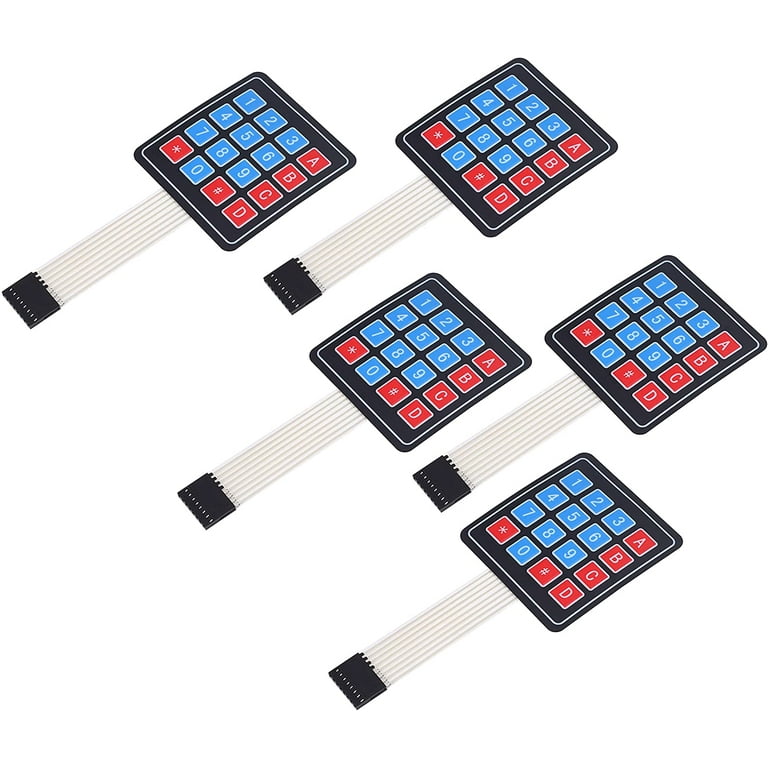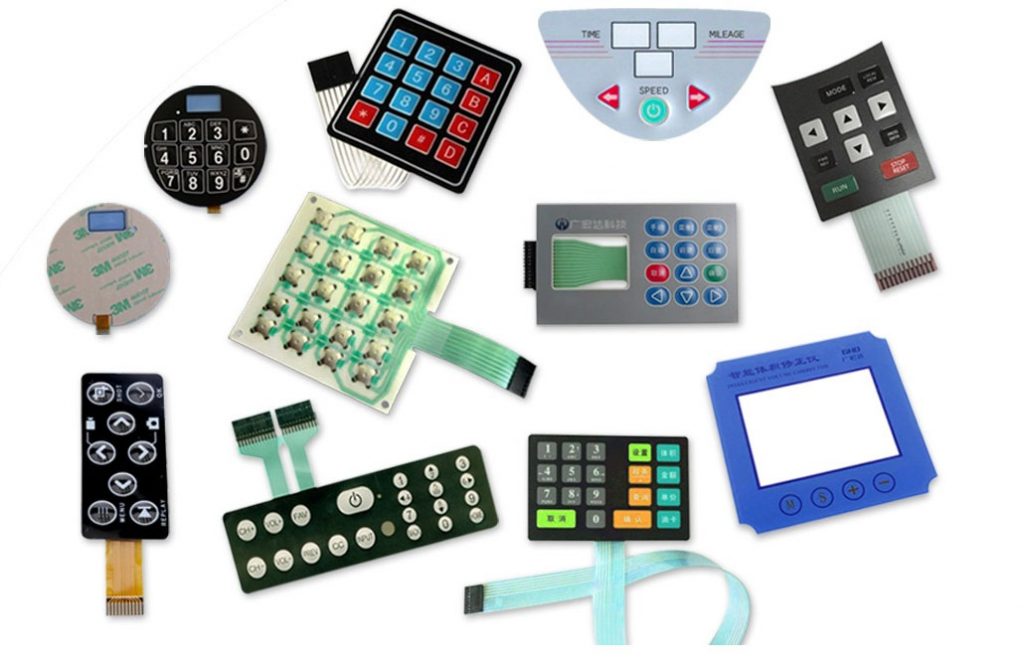Recognizing the Relevance of Membrane Switch in Modern Electronics and Their Applications
Membrane switches work as an important element in modern-day electronics, providing a reliable interface for individual interaction. Their light-weight and adjustable nature makes them appropriate for a variety of applications across varied sectors. Recognizing their key parts and benefits can give insights right into their growing significance. As modern technology proceeds to advancement, the development of Membrane switches over questions regarding their future applications and design developments. What exists ahead in this dynamic area?

What Are Membrane Buttons?
Membrane switches are crucial components in modern electronic devices, working as user interfaces that assist in communication between users and gadgets. These switches contain several layers, including a visuals overlay, an adhesive layer, and a circuit layer, all of which interact to produce a useful and long lasting interface. The design allows for a level, inconspicuous remedy that can be personalized relating to size, form, and visual look, making them suitable for various applications, from consumer electronics to clinical tools. The tactile responses provided by Membrane changes enhances customer experience, while their resistance to dirt and moisture makes them excellent for challenging settings. Membrane switches can incorporate features such as backlighting and published graphics, even more increasing their usability. Their convenience and effectiveness make them a favored choice in markets where reliability and convenience of usage are critical, eventually adding to the smooth procedure of modern-day digital gadgets.
Trick Components of Membrane Changes
While numerous elements add to the functionality of a membrane button, 3 main layers play substantial roles in its design and operation. The top layer, typically made from a sturdy polymer, functions as the interface for customer interaction, commonly featuring printed symbols and graphics. Below this is the spacer layer, which preserves the necessary range in between the top layer and the circuit layer. This spacer layer guarantees that the switch turns on only when pushed, stopping accidental inputs. Lastly, the circuit layer has conductive traces that complete the electric circuit when the top layer is dispirited. These traces can be made from various materials, consisting of copper or silver. Together, these parts create a durable and dependable device that is small and flexible, ideal for a variety of digital applications, from home home appliances to clinical tools. Understanding these key elements is crucial for appreciating the general performance of Membrane buttons.
Benefits of Making Use Of Membrane Switches Over

Membrane Switch Manufacturing Refine
Understanding the Membrane switch manufacturing process reveals the elaborate steps associated with creating these vital components. The procedure generally starts with the design stage, where requirements and formats are produced using specialized software program. Following this, the graphic overlay is printed on an adaptable substrate, typically using high-resolution printing strategies to ensure quality and precision.Next, the sticky layers are used, which offer to bond the numerous parts together. The circuit layers, made from conductive inks or products, are then published onto a separate substrate. These layers are carefully lined up and laminated flooring to develop a useful switch.After setting up, the switches undergo examining to verify capability and longevity. Quality assurance steps are carried out throughout the process to determine and remedy any problems. The finished Membrane buttons are packaged and prepared for distribution, ready to fulfill the demands of contemporary electronic applications.
Applications of Membrane Switches Over in Numerous Industries
Membrane buttons are increasingly used throughout different markets, particularly in clinical equipment and customer electronic devices. In the medical area, they supply trustworthy control interfaces for devices that require exact procedure. In consumer electronics, these buttons enhance customer communication by providing receptive and smooth user interfaces. Receptive Medical Tools Control
Numerous modern medical gadgets use Membrane buttons for streamlined procedure and boosted user interaction. These switches provide a trustworthy, resilient interface for a range of applications, including analysis equipment, person surveillance systems, and surgical instruments. Their personalized designs allow for certain formats that can accommodate the unique needs of healthcare specialists, guaranteeing user-friendly navigation and reliable accessibility to vital functions. In addition, Membrane switches are immune to pollutants, making them appropriate for sterile atmospheres. The tactile responses they provide can improve user self-confidence, decreasing the threat of mistakes throughout essential medical procedures. Generally, the combination of Membrane switches in clinical equipment significantly adds to improved functional effectiveness and individual safety in healthcare settings.
Customer Electronics Interfaces
In the domain of consumer electronics, Membrane buttons play an essential duty in boosting interface across a wide variety of tools. These buttons are indispensable to products such as remote controls, microwaves, and pc gaming consoles, supplying a reliable and straightforward user interface. Their layout enables a seamless combination of graphics and functionality, making it possible for producers to produce streamlined, modern aesthetics without endangering usability. Membrane switches are also recognized for their sturdiness, often withstanding extensive use and exposure to numerous ecological conditions. Furthermore, they can incorporate features like backlighting and responsive feedback, additional boosting the customer experience. As consumer demands for advanced yet user-friendly user interfaces expand, Membrane switches over continue to be an essential component beforehand electronic device functionality.
Style Considerations for Membrane Switches Over
Creating effective Membrane switches over requires cautious attention to different factors that affect both performance and user experience. One crucial factor to consider is the choice of products, as they can impact resilience, responsive comments, and visual appeal. Picking an appropriate adhesive is crucial for guaranteeing lasting adhesion and resistance to ecological factors.In enhancement, the design and style of the button need to suit customer interaction, with switch dimensions and spacing maximized for ease of usage. The unification of graphics and labeling need to prioritize clearness and presence under various lights conditions.Consideration of electric qualities, such as actuation pressure and button level of sensitivity, will certainly enhance the responsiveness of the Membrane switch. The design needs to suit manufacturing processes to assure cost-effectiveness and timely manufacturing. Generally, a well-balanced style boosts both the performance and the user experience of Membrane buttons in modern electronic devices.

Future Fads in Membrane Switch Innovation
As modern technology remains to develop, Membrane switches are positioned to incorporate new advancements that will enhance their capability and application in different fields. One considerable pattern is the incorporation of durable and versatile materials, which will certainly increase the lifespan and dependability of these switches. Enhanced surface area structures and adjustable graphics are likewise anticipated, enabling even more user-friendly user interfaces.Moreover, the assimilation of clever modern technology, such as touch-sensitive surface areas and haptic comments, is anticipated to enhance individual communication, making Membrane switches over much more receptive and appealing. Additionally, breakthroughs in published electronics will allow much more intricate wiring within thinner profiles, further broadening style possibilities.Sustainability will additionally play an important function in future growths, as suppliers discover environment-friendly products and manufacturing processes. On the whole, these trends will certainly assure that Membrane switches stay appropriate and crucial in an interconnected and increasingly electronic globe.
Often Asked Concerns
Just How Do Membrane Changes Contrast to Standard Mechanical Switches?
Membrane switches over deal advantages over standard mechanical switches, including minimized size, lighter weight, and enhanced toughness. They generally supply a sealed surface area, improving resistance to dust and wetness, making them perfect for varied applications.
What Products Are Generally Used in Membrane Switch Building And Construction?

Can Membrane Switches Withstand Extreme Environmental Issues?
Membrane switches can endure severe ecological conditions, relying on their style and products. Premium buildings often feature sturdiness against temperature variations, moisture, and direct exposure to chemicals, making them suitable for various requiring applications across industries.
How Long Do Membrane Switches Over Commonly Last Prior To Failing?
Membrane changes normally exhibit a life expectancy ranging from 1 to 10 million actuations, depending on elements such as use frequency, ecological conditions, and making top quality. Regular upkeep can extend their longevity and functional dependability considerably.
Are Membrane Switches Over Personalized for Particular Applications?
Membrane switches are undoubtedly personalized for specific applications. They can be customized in performance, dimension, and style, allowing makers to fulfill distinct user demands and improve product visual appeals while maintaining operational performance and resilience. Membrane switches are crucial elements right here in modern electronic devices, offering as user interfaces that help with interaction in between users and devices. The tactile comments given by Membrane switches over boosts user experience, while their resistance to dust and wetness makes them perfect for testing environments. The unification of graphics and labeling ought to focus on quality and presence under different lighting conditions.Consideration of electric attributes, such as actuation pressure and switch sensitivity, will certainly boost the responsiveness of the Membrane button. Improved surface area appearances and adjustable graphics are additionally prepared for, allowing for more user-friendly individual interfaces.Moreover, the combination of wise technology, such as touch-sensitive surface areas and haptic feedback, news is expected to improve user communication, making Membrane switches over much more interesting and receptive. Membrane switches over deal advantages over traditional mechanical buttons, consisting of minimized dimension, lighter weight, and enhanced resilience.